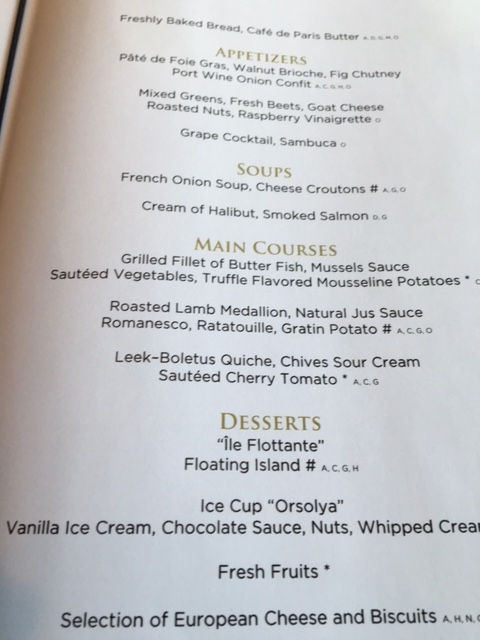Day 6
 IMG_5105.jpg |  IMG_5095.jpg |  IMG_5096.jpg |
|---|---|---|
 IMG_5098.jpg |  IMG_5100.jpg |  IMG_5101.jpg |
 IMG_5102.jpg |  IMG_5099.jpg |  IMG_5104.jpg |
 IMG_5103.jpg |
Our Monday was quite full as our first stop was to visit the town of Blaye (which I skipped). then Leoness Cellars second wine presentation , followed of course by lunch, then an afternoon visit to the town of Bourg with a tasting (travelled from Blaye tp Bourg during lunch), late afternnon drinks in the lounge, then dinner and finally ending the evening on the upperdeck with more wine and dancing in the lounge. Was quite exhausted when I crawled into bed!
Mike Rennie, owner of Leoness Cellars, for his second presentation, focused on the Rhone varietals created for the American palate. While yesterdsay Mike stressed the imprtance on farming techniques, today he chatted about the selection of varietals avaiable in California. It is no surprise that California is still in its infancy when compared to the hundreds of years of historical data that the Europeans (especially the monks) have amassed which in turn generated the reason why certain grapes grow better in different regions and different terroirs. The perks of this system is that there are no regulations preventing anybody to grow and make any type of varietal. However, as Mike pointed out, we are learning so much today based on our knowledge on clonal selection, parcel selection and massal selection.
And his two wines presented such diversity.
The first, 2012 Syrah, is so typical of California. While the French style counterpart, such as Crozes Hermitage, St. Joseph and the great Hermitage all have componenents of spice, round tannins and that famous bacon fat quality, Mike's Syrah offers bold, muscular rich ripe black fruit, , lush evidence of alcohol with and a powerhouse of a finish. So very different.
His second wine, 2025 Grande Melange (great blend) is composed of 60% grenache with 40% syrah) showcased how blends work, how grapes that love each work better together, how the sum is often better than the individual componenents. This wine expresses a silkiness,(the French would call this "velouté") not often found in a wine so young. Extremely rich at the same time, all four components (alcohol, fruit, tannin and acidity) all join harmonously to create a delicious symphony. Bravo!
Our afternoon excursion was to a Maison de Vins Cotes de Bourg where we sampled 4 wines from two producers, one a very small vigneron of 10 hectares, the other, a more sizeable vigneron of 70 hectares.
The first (a 2015 Blanc) composed of 50% sauignon blanc and 50 % sauvignon gris is feremented sur lie in stainless steel tanks with good crispness yet some creaminess due to the "surlie" contact. Her second wine was a 2014 Malbec (100%) totally refreshing with the high acidity at the forefront screaming "give me food" which the little pate hors d'oeuvres complimented beatifully. Some American tasters complained that the wine was too acidic, not as lush or round as the majority of Argentian malbecs have now become.
The other producer offered us 2 reds: the first a 2014 blend (80%b malbec, 20% cabernet franc) totally unoked that was quite pleasant but quite light with soft annins and round red and black fruit. the other a full Malbec that was certainly bigger, yet expressing wonderfully the terroir of Cotes de Bourg.




Upon our return to AmaDolce we just had time for some ice tea before dinner. Tonight's menu was a special tribute to the "La Confrerie de la Chaine des Rotisseurs", the world's oldest international gastronomic society.
We then went to the upperdeck with some wine then decided to end our evening dancing (NO PICTURES!)



